Edible Autumn: Vegan Trio of Inari Sushi, Myoga Sushi and Chrysanthemum petal pickles
/ 稲荷・茗荷寿司・菊なます
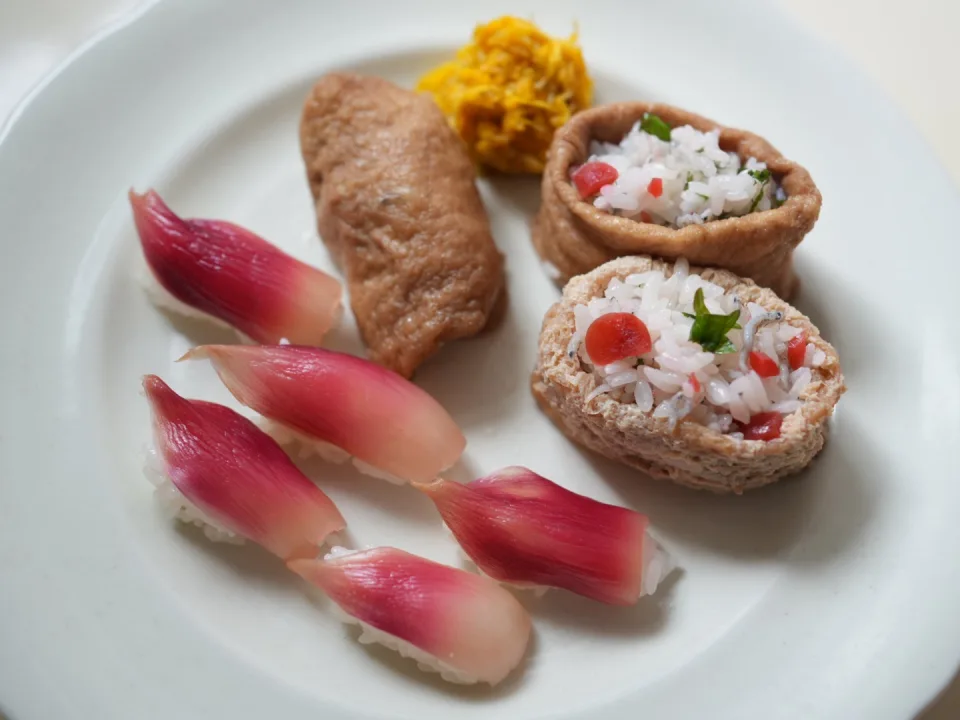
The Scent of Season, on a Plate
There’s something poetic about eating in Japan in autumn. Even before tasting, you can see and feel the season—the gentle fading greens, the sudden blush of maple, the softness of overcast skies. My meals, too, began to lean that way: muted, earthy, nostalgic.
Craving the seasonality that defines Japanese cuisine, I turned to sushi. Not the dazzling kind with fish and rolls, but the quiet, homestyle sort that reflects what the garden and market offer this time of year. Vegan, or almost. Satisfying, soulful.
Chrysanthemum Petal Pickles: Edible Symbols of Autumn Nobility
In Japan, chrysanthemums (kiku) are more than just flowers—they symbolize longevity and rejuvenation. The flower is so culturally significant it’s the crest of the Imperial family. In autumn, edible varieties bloom in the produce section, known as “shokuyou-giku” (edible chrysanthemums), and are used in a variety of pickled and vinegared dishes across northern regions like Yamagata and Aomori
Quick recipe- Chrysanthemum Pickles
- Boil edible chrysanthemum petals quickly (about 10 seconds).
- Drain softly with cloth / cooking paper, let it cool a bit.
- Pickle in a mix of vinegar, sugar, salt, and a bit of water.
- Let rest for a few hours before serving.
The taste? Bright, floral, and gently bitter—the kind of bitterness that sharpens the appetite and awakens memory. A few petals go a long way.
See the motion in video

Quick flow in photo
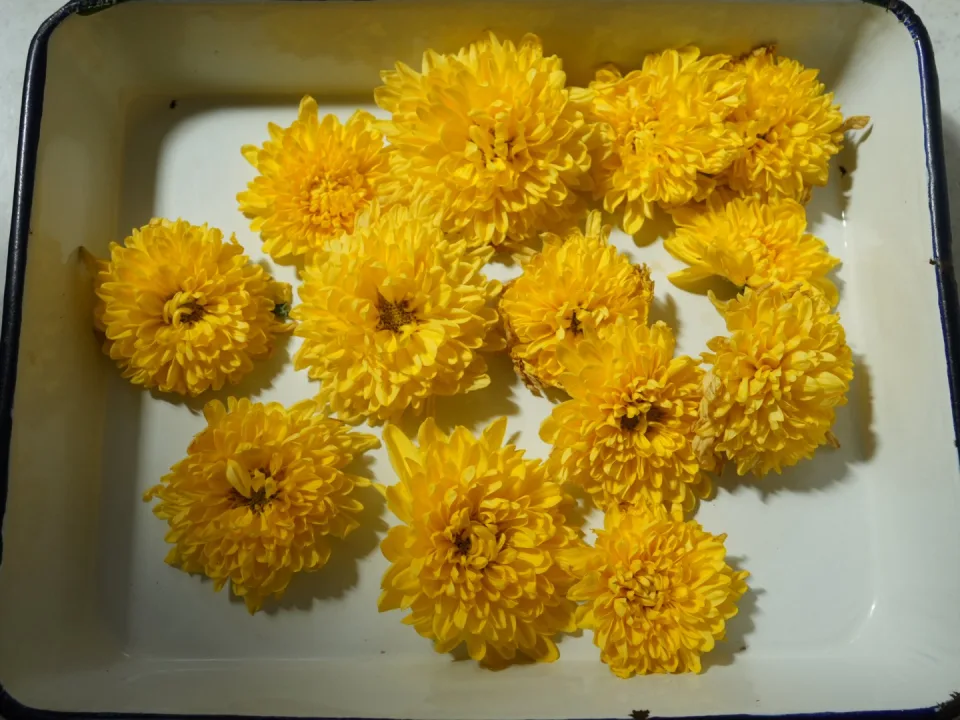
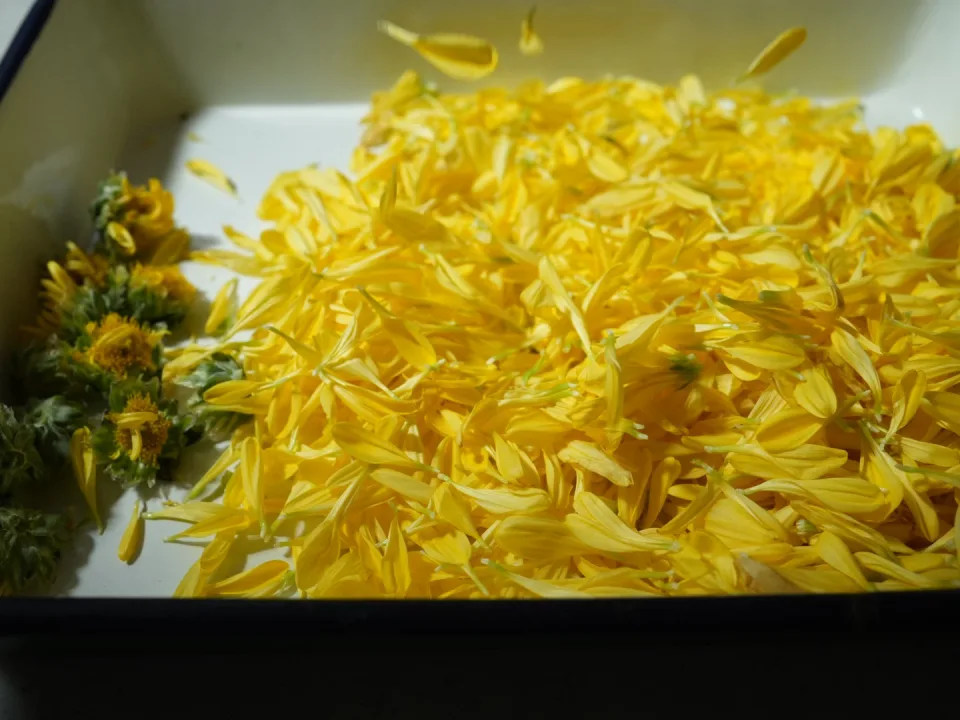
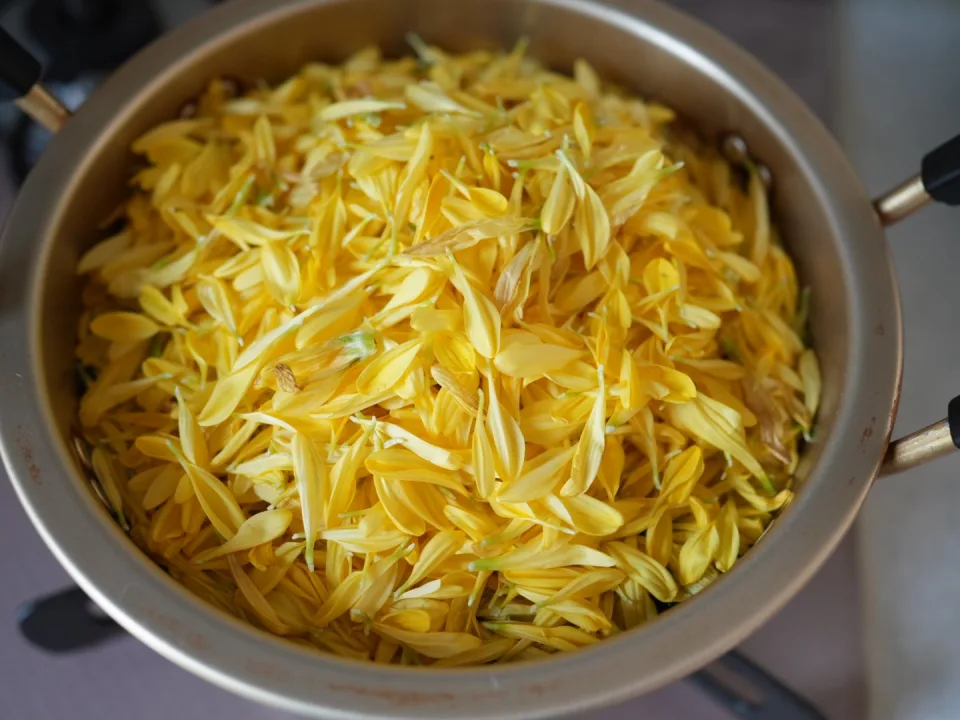
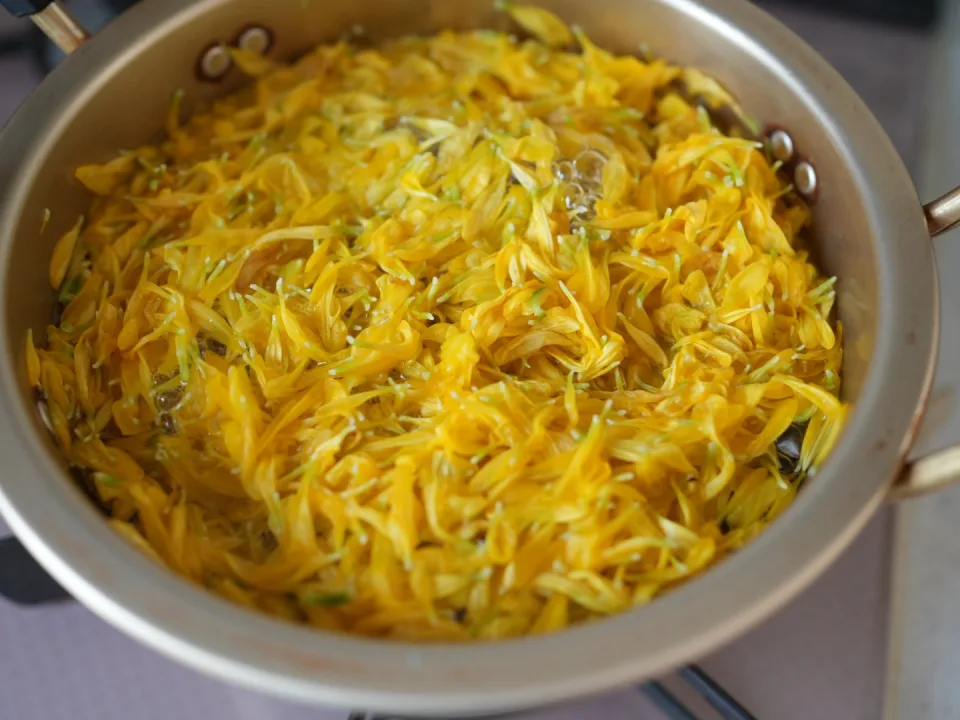
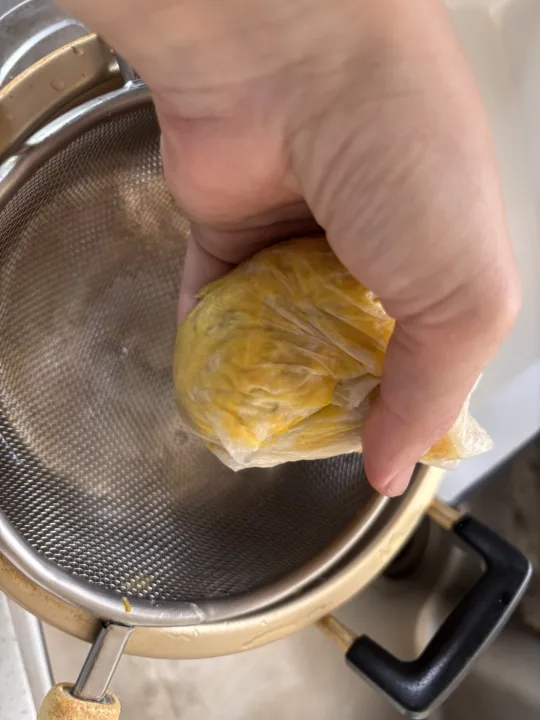
Myoga Sushi: A Lemongrass-Like Herb with Gentle Bitterness
Myoga is a member of the ginger family, but it’s not the root that’s used – it’s the unopened flower buds. While its appearance may remind one of shallots, its aroma leans closer to a cross between lemongrass and young ginger: bright, citrusy, and slightly earthy.
We could find them all year around now, but they are autumn grocery.
To highlight its unique taste, I made:
- Pickled Myoga: Sliced vertically to reveal the layers (not “petals”), then soaked in vinegar, sugar, and salt. The process transforms its color to soft pink and enhances its bitterness with tangy balance.
- Myoga Nigiri Sushi: I paired the pickled slices atop vinegared rice, pressed gently into shape by hand. It’s simple, aromatic, and pairs well with the crispness of the chrysanthemum.
Quick recipe- Myoga Pickles
- Peel and slice lengthwise into petal-like forms.
- Soak in marinade of vinegar, sugar, and salt.
- Let sit for few hours
The color intensifies to rose-pink, and the flavor turns complex—sharp, cooling, aromatic. It’s not just a garnish. It’s an invitation.
Quick flow in motion

Quick flow in photo
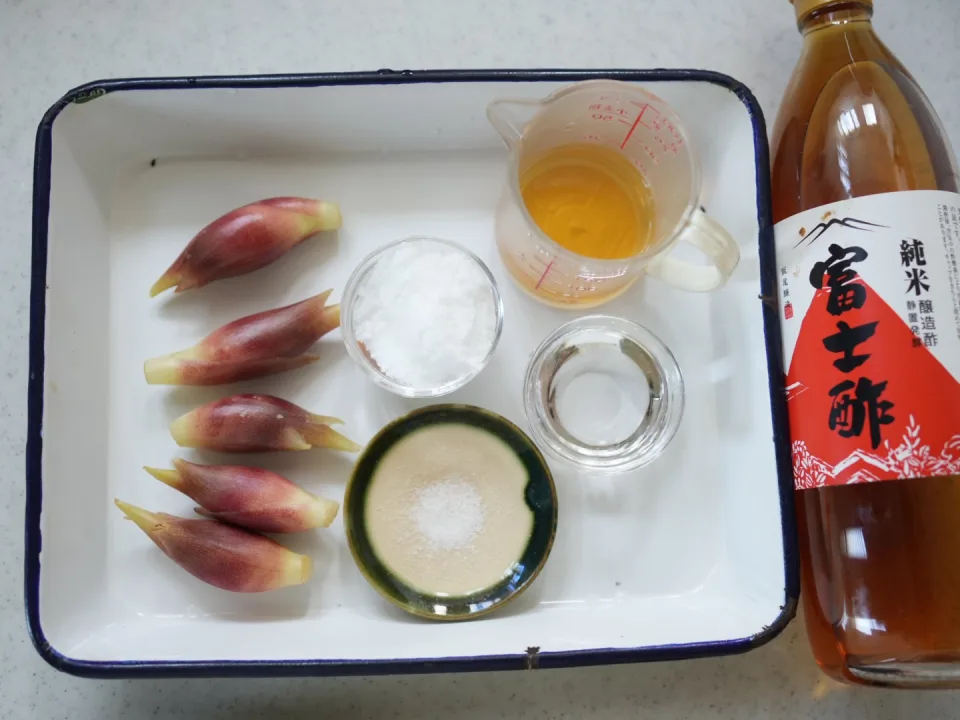
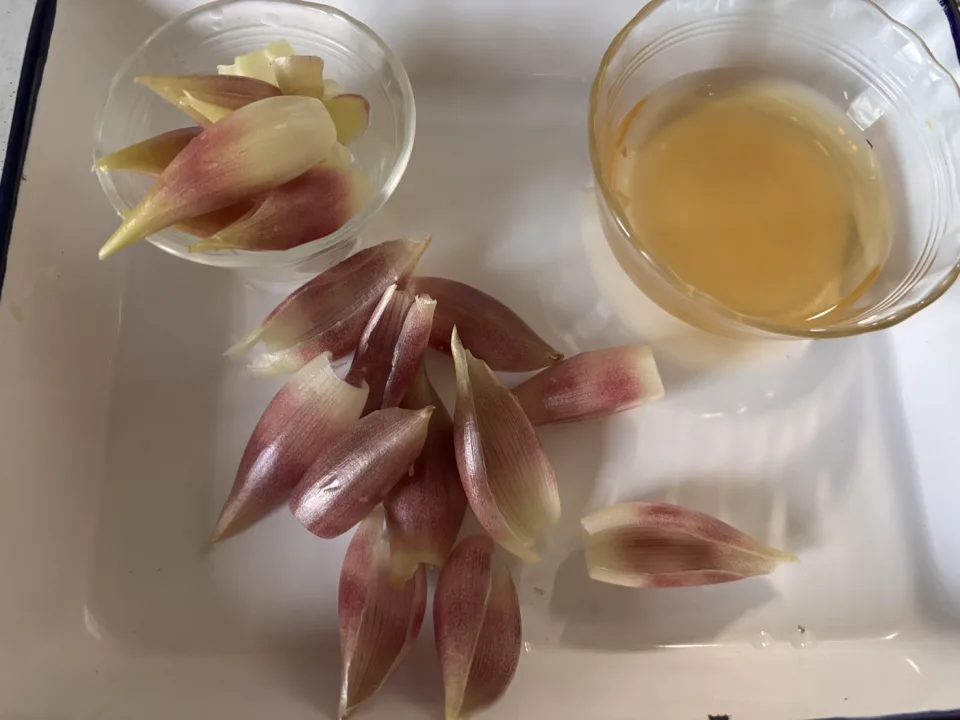
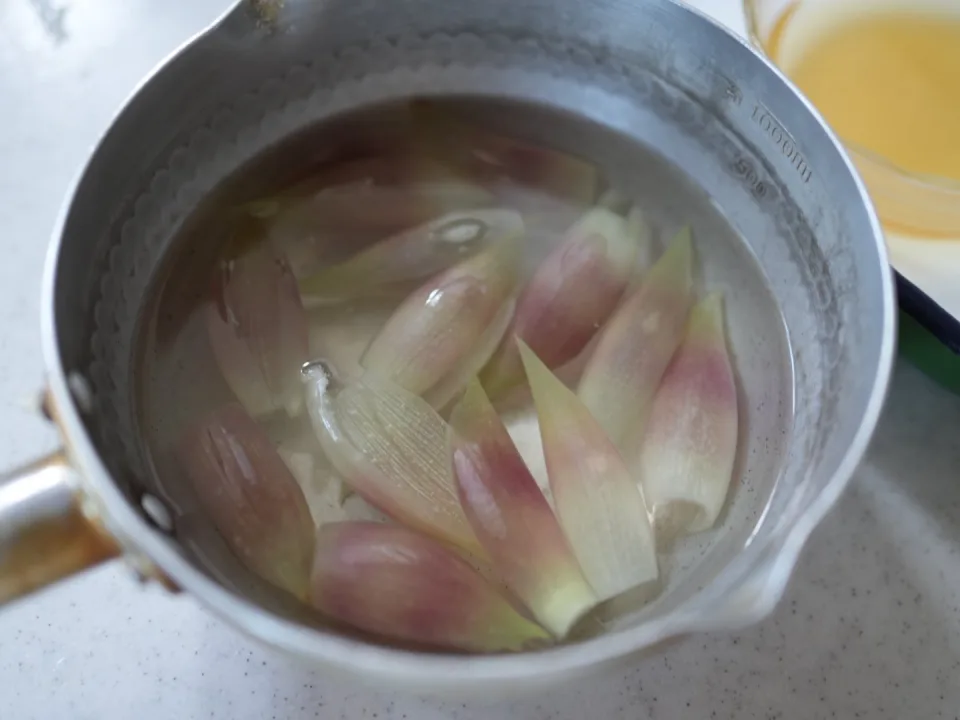
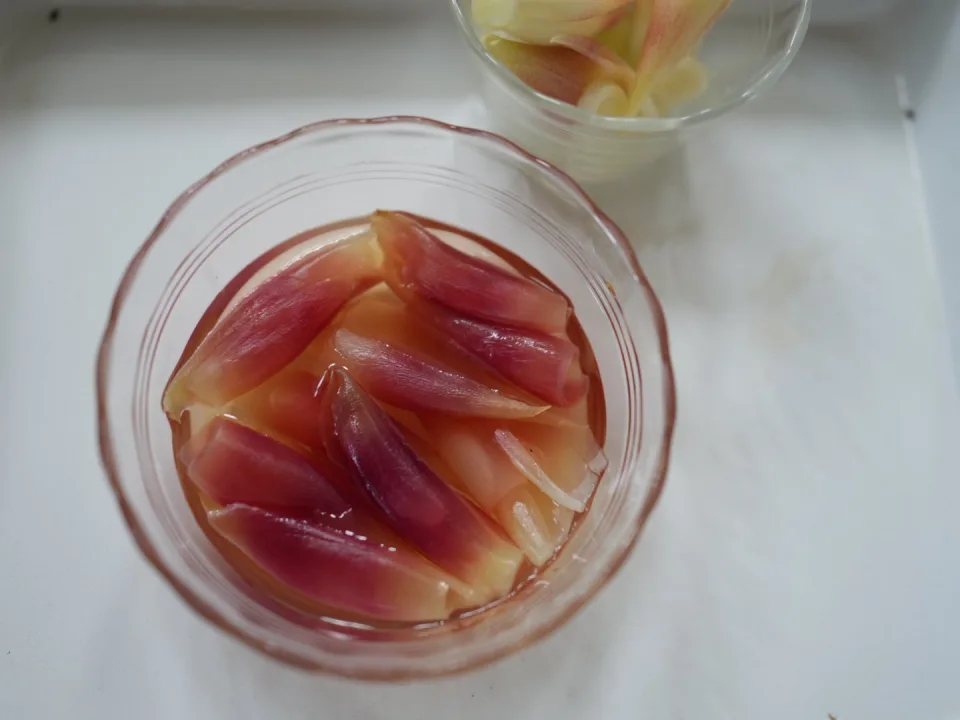
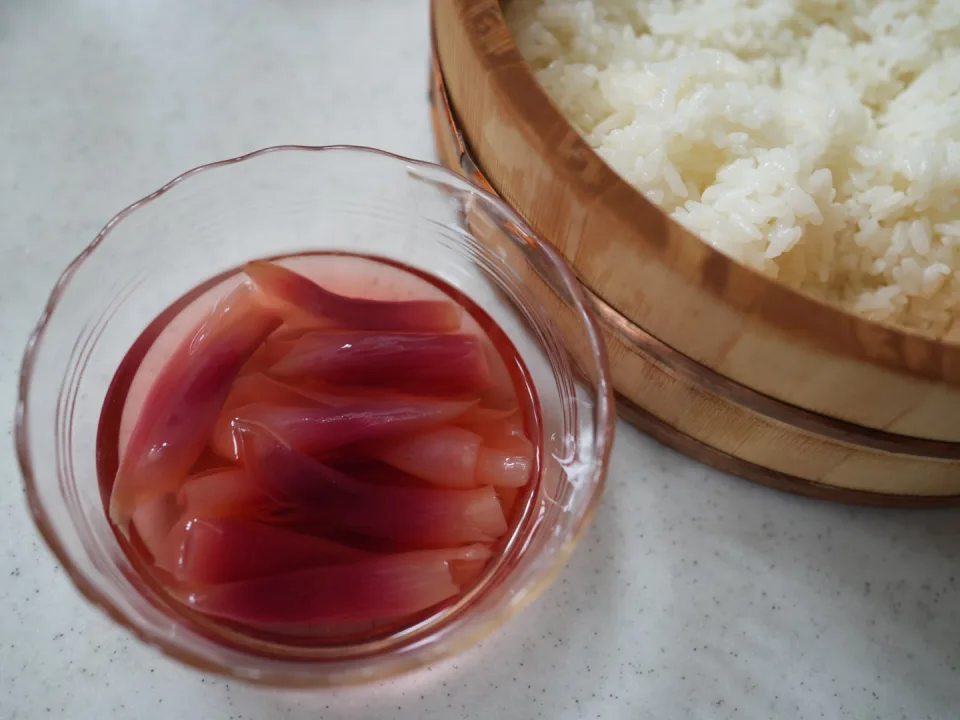
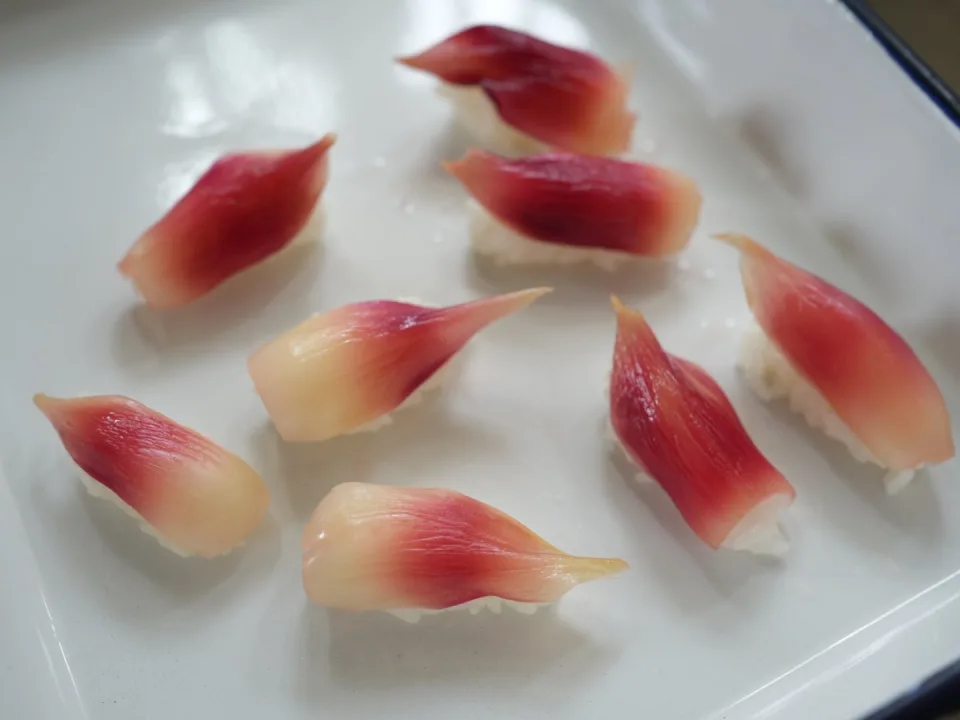
Inari Sushi: Sweet-Savory Pouches Made with Aburaage
The final item on this autumn sushi plate is inari sushi – a comforting, nostalgic dish that is deeply familiar to the Japanese household. What makes it special is the tofu wrapper called aburaage (油揚げ), which plays a unique role in Japanese cuisine.
Aburaage is made by slicing tofu into thin sheets and deep-frying them twice—first at a low temperature to expel moisture, then at a higher temperature to puff them up. The result is a light, golden tofu skin with a hollow interior, perfect for absorbing sauces. It’s often used in miso soup, simmered dishes, and especially inari sushi, where it serves as a pouch for vinegared rice.
Ingredient list & Steps in Text for Inari Sushi Tofu Skin
Ingredients
- Water: 460ml
- Fried tofu (aburaage, for inari-zushi): 10 sheets (halved to make 20 pouches)
- Seasoning A (for simmering):
- Dashi stock: 1 cup
- Light brown sugar: 5 tsp
- White sugar: 110g
- Soy sauce: 2 tbsp
- Mirin: 2 tbsp
- Final glaze Seasoning (added at the end)
- Light brown sugar: 4 tbsp
- Soy sauce & mirin: 2 tbsp each
Instructions
Prep the Aburaage (Fried Tofu Skins)
Cut each sheet in half and open to form pouches. Boil them in water for 5 minutes, using a wooden drop lid or something to hold them submerged. This removes excess oil and odor. Drain well.
※This step is crucial—it lightens the flavor and helps the tofu better absorb the sweet-savory broth.
Simmer – Step 1
In a pot, combine dashi and the first amount of sugar. Add the drained tofu pouches and gently simmer. Add white sugar on top, cover with a drop lid (preferably silicone), and simmer for 3 minutes.
Simmer – Step 2
Add soy sauce and simmer for about 5 more minutes. Avoid boiling vigorously, as the pouches can become tough.
Final Seasoning
Add the remaining light brown sugar and mirin. Let simmer over low heat until most of the liquid is absorbed and the tofu is well coated in sweet-savory flavor.
Quick flow in motion

Quick flow in photo
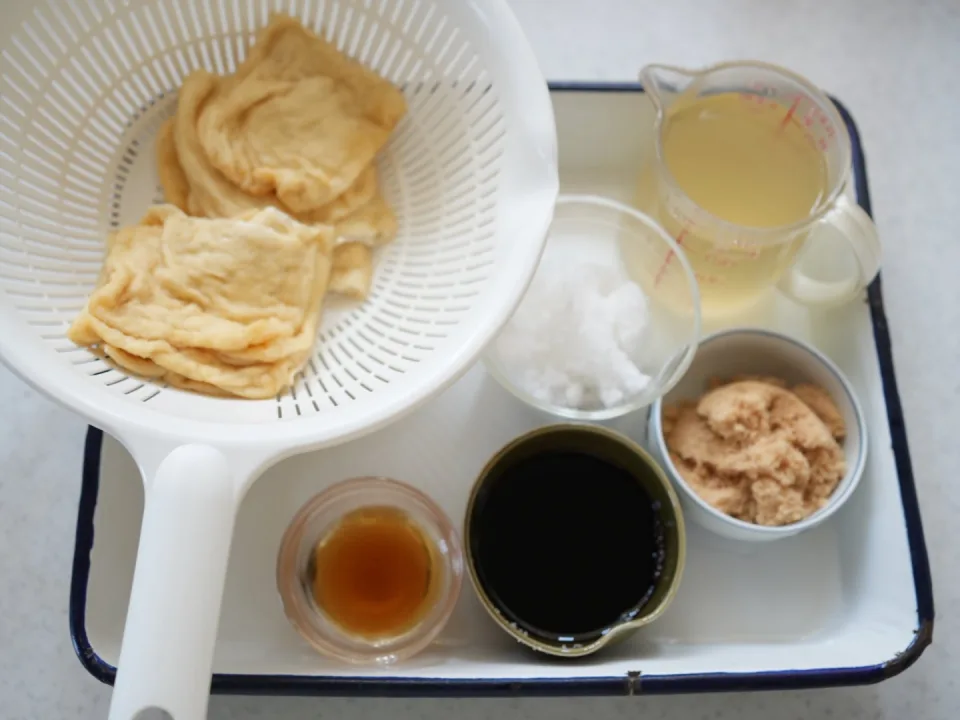
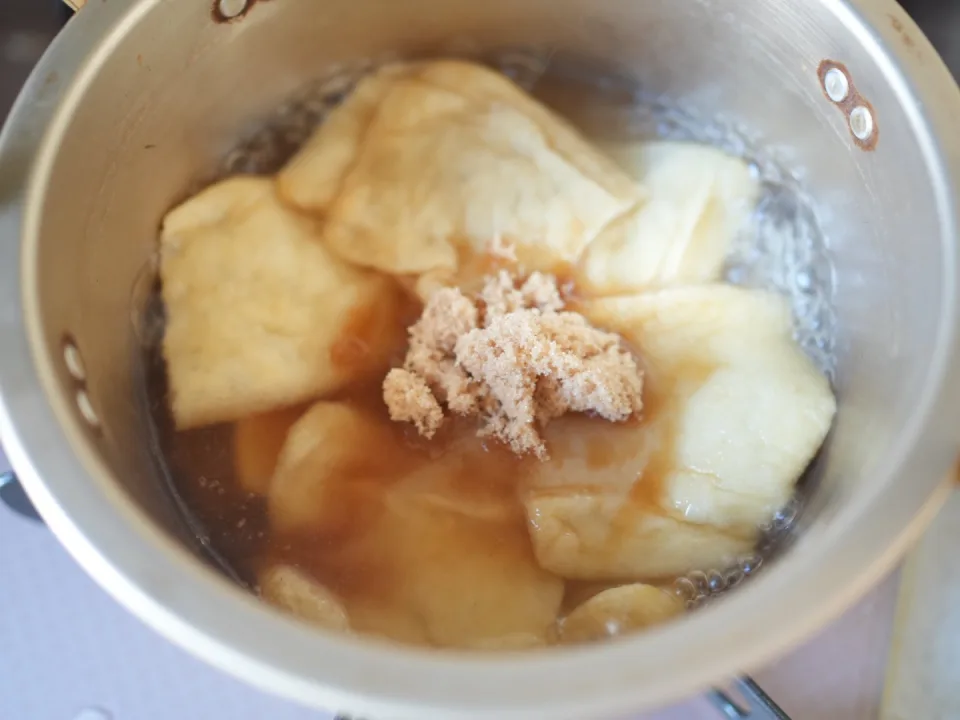
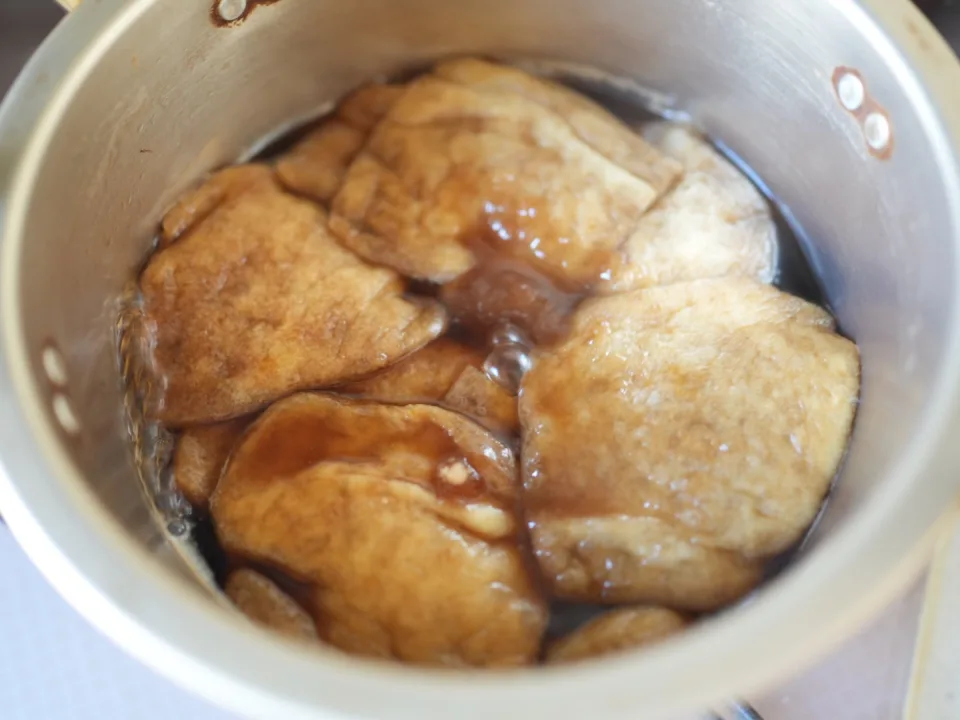
Recipe- Basic sushi rice (this time mixed with pickles)
- For 2 cups cooked rice, use:
- 3 TBS rice vinegar
- 1 TBS sugar
- 1 TSP salt
- Cook the Rice
Rinse the rice thoroughly until the water runs clear. Drain and let rest for about 30 minutes. Cook with 460ml water using a rice cooker or heavy pot. Once cooked, let it rest covered for 10 minutes to allow residual steaming. - Prepare the Sushi Vinegar
In a small saucepan, combine sugar, rice vinegar, and salt. Heat gently until the sugar dissolves completely. Do not boil. Set aside to cool. - Season the Rice
Transfer the hot rice to a wide wooden tub (hangiri) or a large bowl. Drizzle the sushi vinegar evenly over the surface. - Mix with Care – Cut, Not Stir
Using a shamoji (rice spatula), mix the rice with a gentle “cutting” motion — slice through the rice diagonally and lift to fold, rather than stirring in a circular motion. This prevents crushing the grains and avoids excess stickiness. Simultaneously, fan the rice to help it cool and give it a glossy finish. A folding fan or small desk fan works well here. - Cool to Body Temperature
Continue cutting and fanning until the rice reaches a warm, body-like temperature. This ensures the rice retains its shape and texture when shaping sushi. - Moisten Hands Before Handling
When forming sushi or packing into inari pockets, always moisten your hands with lightly salted water. This prevents sticking and helps in gently shaping the rice without pressure.
I added minced pickled plums, shiso leaves, and a bit of dried young sardines (shirasu) to the rice before filling—though you could leave out the fish for a fully vegan version.
The result was juicy, sweet-savory pockets with a satisfying heft. A dish you can eat in silence and still feel full in every sense.
Quick flow in motion – How to make Sushi, Techniques in video

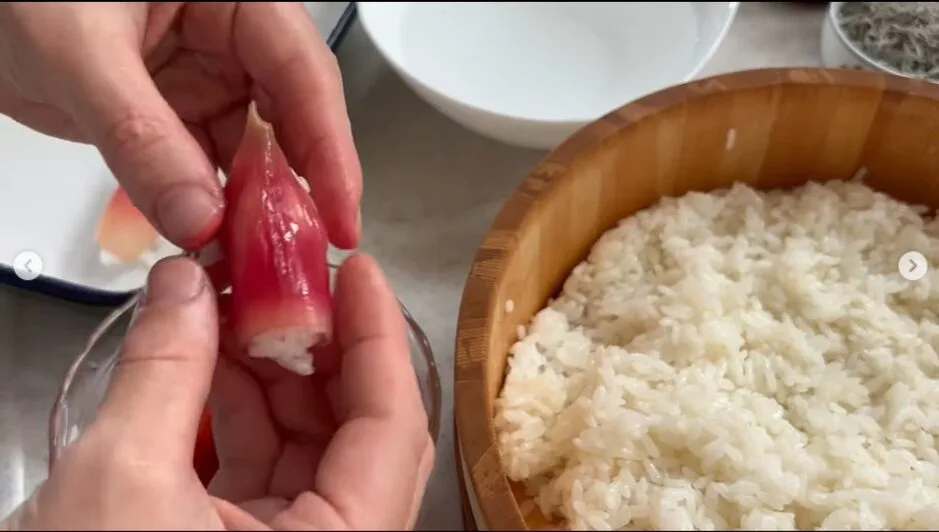
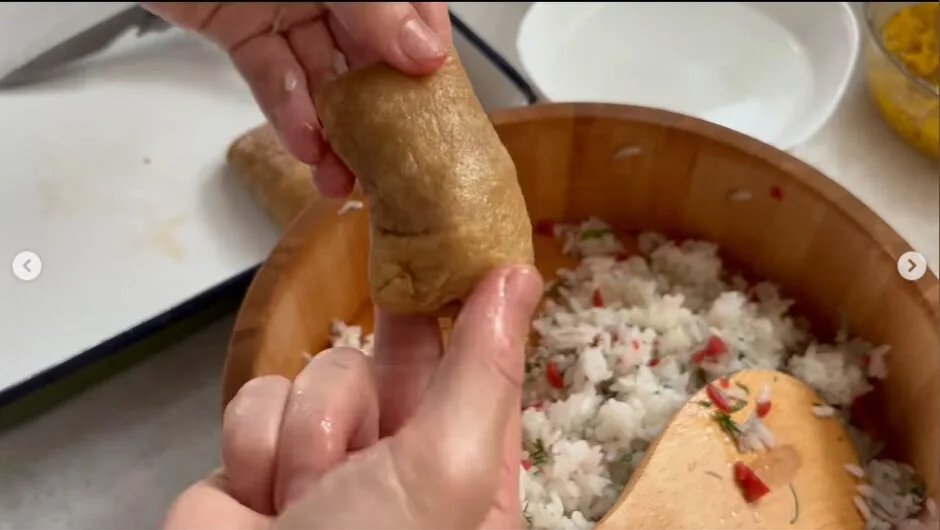
Quick flow in photo
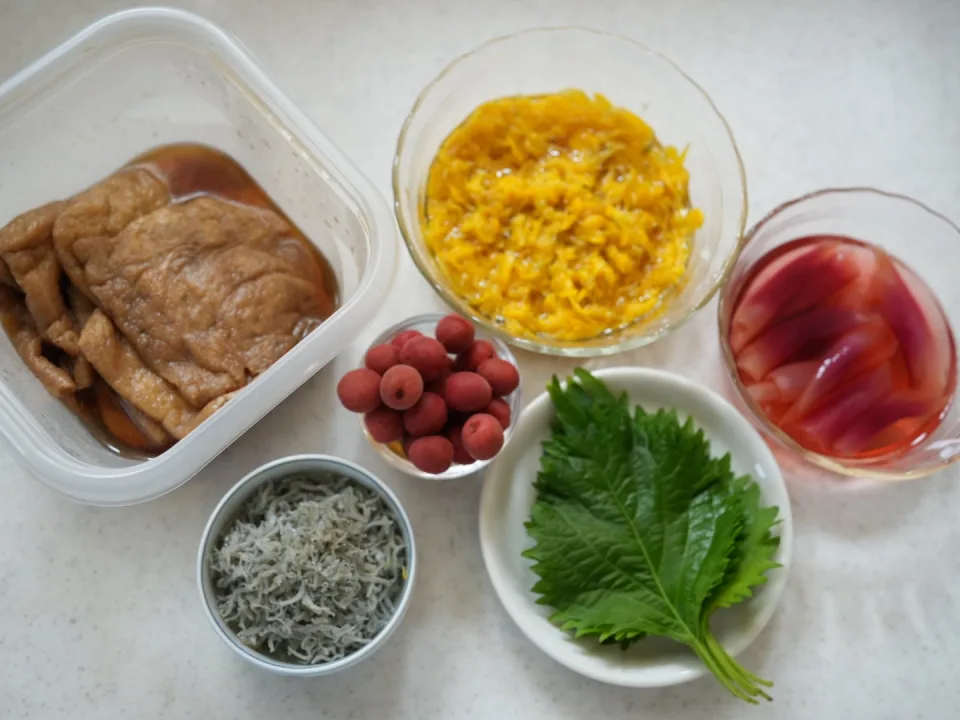
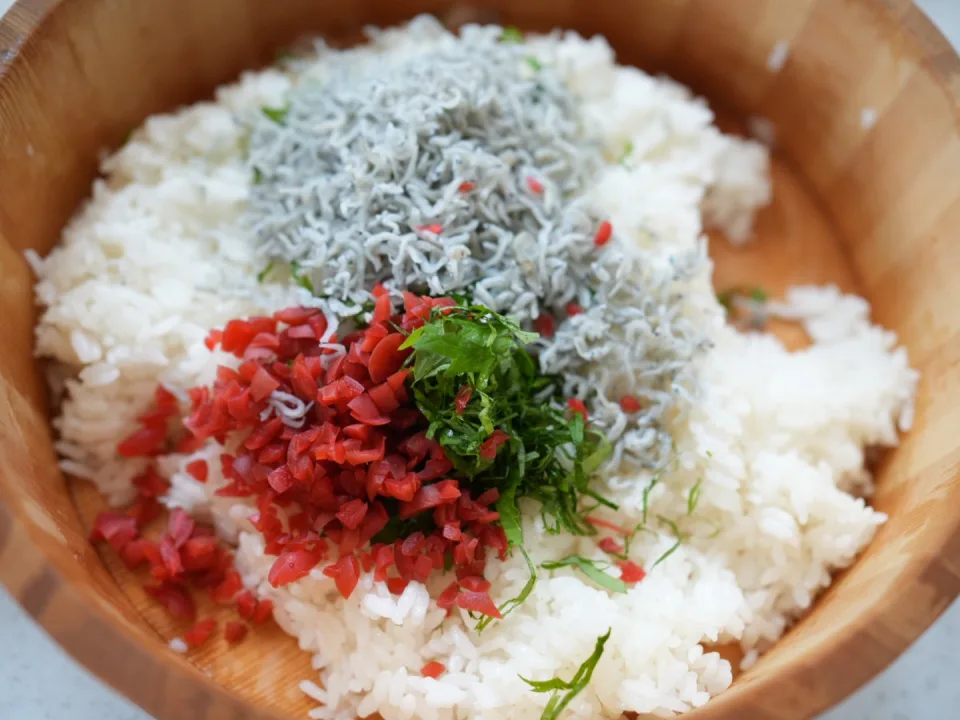
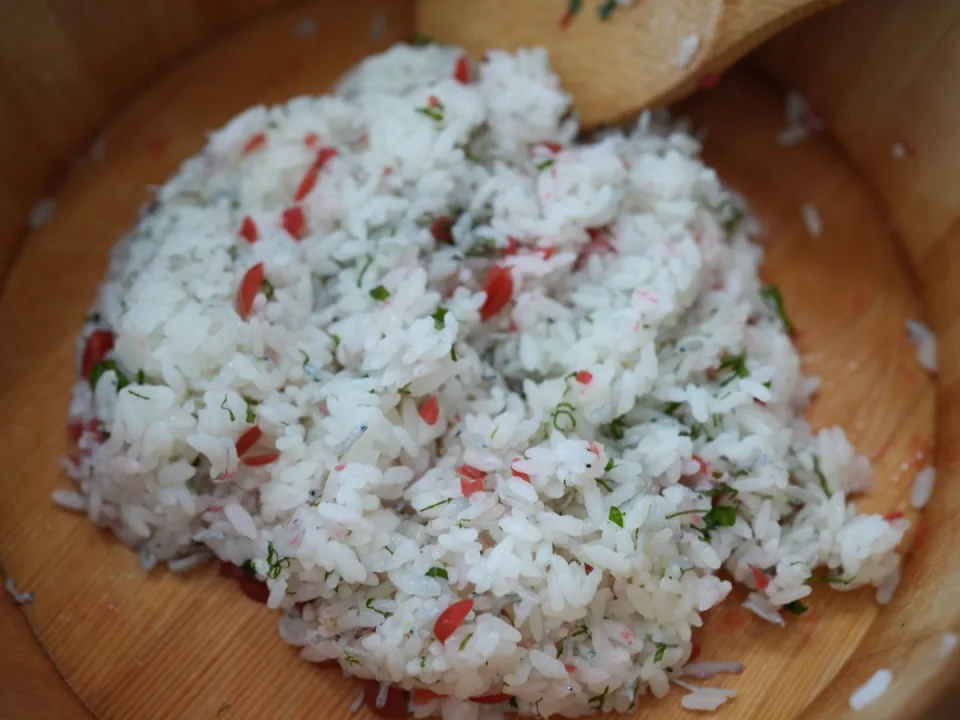
Reflections on Plant-Based Japanese Cuisine
What I love most about Japanese cooking is its attentiveness to season and setting. It teaches you to observe—to see subtle changes in color, taste, texture, and temperature. Even in a small meal like this, you can feel the quiet passage of time. Chrysanthemum petals echo the falling leaves. Myoga’s bite reminds you of cold morning air. Inari pouches offer comfort and depth.
Though I added dried sardines to one version, the base ingredients are all plant-based, making this a beautiful almost-vegan offering for anyone exploring seasonal Japanese home cooking.
和の季節寿司で、秋の気配を味わう
帰国中の日本、秋が深まり、台所にも季節の空気を感じるようになりました。お刺身や巻き寿司ではなく、手軽に、家庭で楽しむ「おすし」。今回は植物性中心の組み合わせで、体にも心にもやさしい一食となりました。
茹でた菊の花びらは、甘酢でさっぱりと。独特の香りとほんのりとした苦味がクセになります。茗荷はスライスして同じく甘酢漬けに。時間が経つとほんのりピンク色に染まるのが嬉しい変化です。
いなり寿司は、昆布だしとしょうゆ・みりん・砂糖でじっくり煮含ませた油揚げに、梅干しと大葉、おじゃこを混ぜ込んだ酢飯を詰めました。しみじみとおいしく、ほっとする味です。
ほんとうは「もってのほか」(山形の菊)も使いたかったのですが、残念ながら時期が早く見つかりませんでした。それもまた、季節の巡りを感じるひとときです。
This post has a Video: Watch on Instagram✨(インスタに動画掲載しています)
A short Instagram video is available below, showing the overall flow and highlights of the recipe.
インスタで、動画を交えて全体の流れやポイントをご紹介しています。
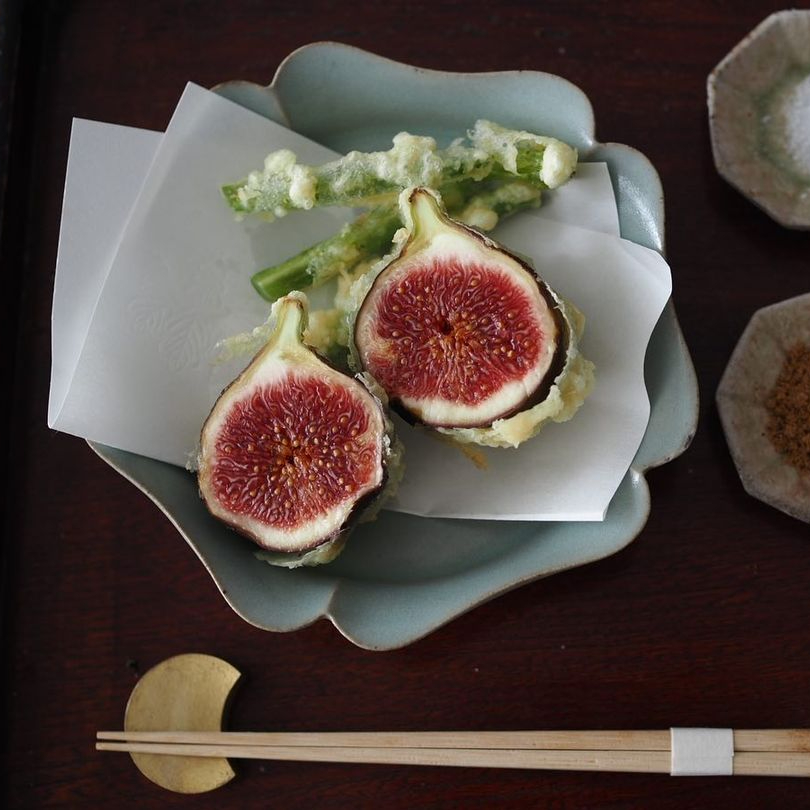

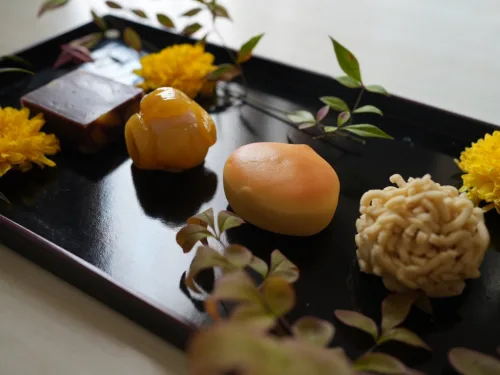
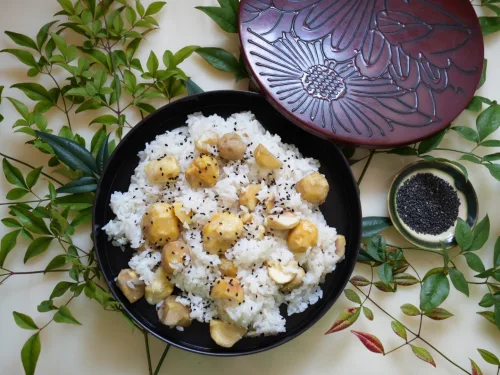
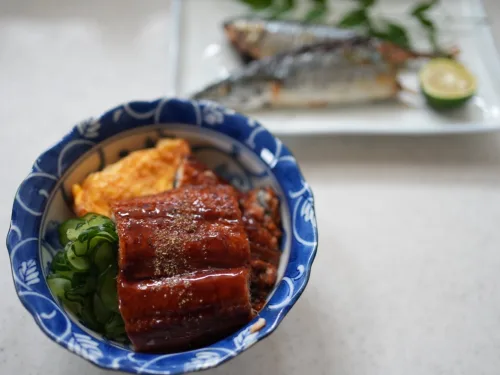
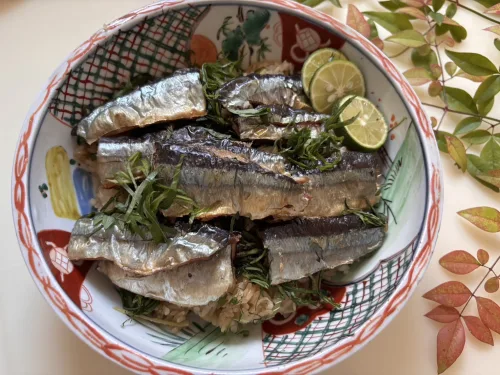
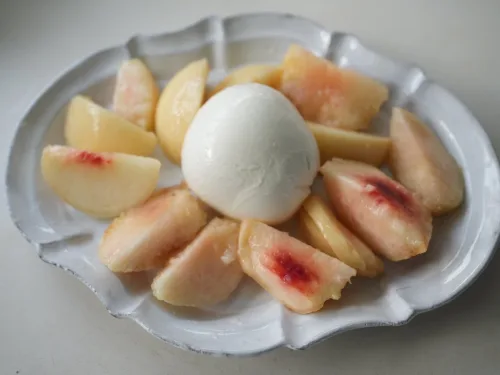

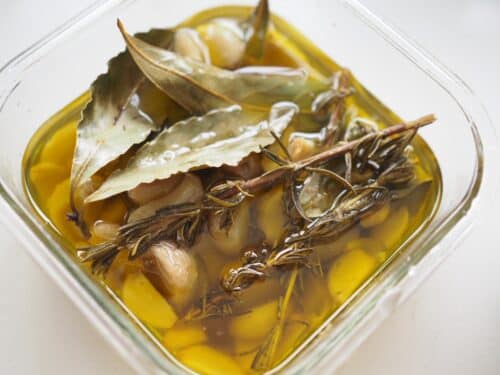
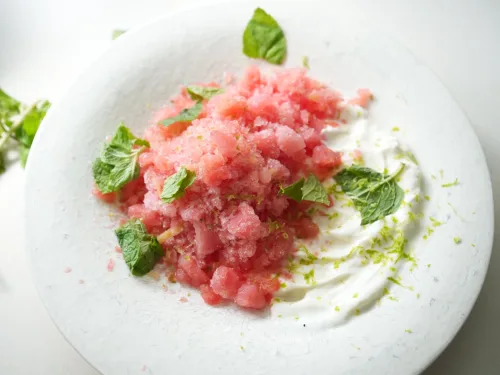
Comments